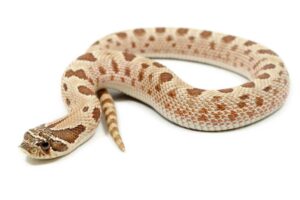When you’re a hunter, you want to know for sure when the deer will be there to hunt, regardless of the weather.
Most hunters know that deer tend to move around more when it’s windy outside than when the weather is calm, but does the same thing apply to rainy weather?
Do deer in rain move more than they do when it’s calm, or does calmer weather make them move more?
As a general rule, deer tend to move quite a bit in the rain, as long as it isn’t too cool or raining too hard outside. In fact, some hunters find they get more opportunities to shoot at deer when there is a steady, misting rainfall outside.

Deer in Rain: What Do the Experts Say?
Numerous studies have been done on deer, especially whitetail deer, and how the rain affects their movement. Unfortunately, the results are somewhat inconsistent, in part because there are so many variables that go into the studies.
For instance, a study in Oklahoma found that the rain did not produce any noticeable changes in the deer’s behavior, while other studies have found that deer do move more during light to moderate rainfall, although their movements were only slightly affected.
All in all, it seems that light rainfall can increase their movements, while heavy rainfall can actually decrease them.
Hunters can think of it this way: if it’s too cold, too windy, or raining too hard outside, you likely won’t want to go out and hunt for deer.
But if it’s only slightly cool, a little windy, or misting lightly when you go hunting, you’ll very likely not let those things stop you.
With deer, it’s the same way. They don’t mind a misty rain or some cool weather, but they may stay away from hunters and not roam too far if it’s cold or pouring down rain.
Many researchers have confirmed that deer movement can increase slightly when it’s raining or misting lightly, but not when it’s raining heavily.
Deer are also crepuscular, which means they move more at sunrise and sunset than they do other times of the day. This is why it might do hunters good to hunt at those times during the day.
And when you’re trying to learn more about their overall movement, here are seven things to keep in mind:
- Bucks do not necessarily run all over the place during the rut. In studies that used GPS tracking, it was proven that most bucks simply stayed close to their core home ranges during the rut. This means that most of them stick to a 15- to 20-acre area and no more. Some deer, of course, will spread out much farther, but the vast majority of bucks stayed close to home during the rut.
- There is no actual lull in movement in the month of October. Multiple studies looked at whitetails with GPS collars on them and found that the opposite is true: deer actually increase their movement come October. They sometimes change their actual locations somewhat, but there is no actual lull in movement.
- High winds do not always limit deer movement. Penn State University did a study on deer movement during high winds and found that if winds got above 10 miles an hour, the deer sometimes moved more during daylight hours, not less. At night, the opposite was true: the deer moved less when there were high winds outside.
- Rut movement does not necessarily slow down when the weather is warm. In general, it has been found that the rut occurs at mostly the same time each year. The thing is, breeding can happen in darkness just as it does in daylight. When it’s warmer, it’s likely that rut movement still occurs, but it’s likely happening at night when we don’t see it.
- Deer movement is not affected by the phases of the moon. This is yet another myth that many hunters believe but which isn’t true. Again, more than one study has proven that there is no correlation between the lunar phase and the movement trends of deer. This has been documented in more than one study, so don’t believe what you hear otherwise.
- Bucks do not cover more territory just because they are studs. People sometimes think that bucks become more dominant as they get bigger and lay claim to more turf, but this isn’t true. Some older bucks have home ranges that cover around 500 acres, but just as many other bucks have home turfs that are much smaller, sometimes no more than about one hundred acres.
- Deer on public land do not flock to private land come deer season. Instead, most deer on public land relocate to public areas that are harder for hunters to access. Even more interesting is the fact that most public land hunters choose locations that are within one-third of a mile from where they parked. If hunters walk further, they’ll likely find more public-land whitetails roaming around during daylight hours.
When it comes to hunting, there are many myths that most hunters still believe, but keep in mind that above all else, deer are not all alike.
Just like humans, they can each differ quite a bit when it comes to their behavior and their movement during deer season. While the above paragraphs describe the general findings when it comes to deer, just remember that they may not apply to every single deer that you find.
While they are good tips to remember, they do not all apply to every deer out there.
Conclusion
Many hunters believe that deer increase their movement and activity when it’s raining, but that isn’t always the case. When it comes to deer in rain, they do tend to move more when there’s light rain or mist outside, but not when it’s raining heavily.
Likewise, there is generally no lull in October, deer do not run all over during the rut, and the moon phases don’t affect these animals’ movements.
And if you’re going to improve your skills as a hunter, it’s a good idea to learn the facts and not the myths when it comes to deer and their movements.











